#dashper
Photo

Pied Currawong (Strepera graculina)
© Jono Dashper
42 notes
·
View notes
Text

Australian King Parrot (Alisterus scapularis), family Psittaculidae, order Psittaciformes, Macquarie Pass National Park, New South Wales, Australia
photograph by Jono Dashper (@jonodashperwildlife)
358 notes
·
View notes
Text
Lycalopex fulvipes
Charles Darwin found these foxes on the voyage of the Beagle, so they were named after him. Their native name is zorro chilote.
They are described as charismatic and bold around people. After meeting one of them on Chiloé island in 1834, Darwin described them as “more curious or more scientific, but less wise, than the generality of his brethren”. In other words, Darwin’s foxes are very curious and observant, but not as wise as other fox species.
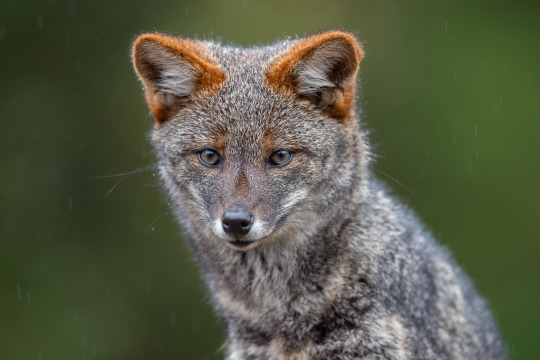
Darwin’s foxes are not actually foxes. True foxes belong to the vulpes genus, and these foxes belong to the lycalopex genus. They share this genus with the Sechuran fox, the hoary fox, the pampas fox, the culpeo, and the chilla. It was believed for a long time that the Darwin’s fox was a subspecies of the chilla, but they are now classified as a different species.
While most South American fox species prefer open grassland or scrub areas, Darwin’s foxes prefer dense forests. They are endemic to Chile, meaning they are only found there, with most individuals found on Chiloé island and in the Valdivian Coastal Range.
In these forests, Darwin’s foxes hunt for small animals like rodents and lizards along with fruit, eggs, beetles, and carrion. They are not strictly nocturnal, diurnal, or crepuscular, so they just hunt when they want to.

Like almost all other fox species, Darwin’s foxes prefer to live alone, only living in pairs during the breeding season and when they have kits.
Due to habitat loss, feral dogs, and being hunted for their fur, Darwin’s foxes are highly endangered with less than 1,000 individuals left. Conservation efforts have grown their population by small amounts but they are still in danger of extinction.
I rate this very curious fox 18/10. They may be “less wise” than other foxes but their charisma makes up for that
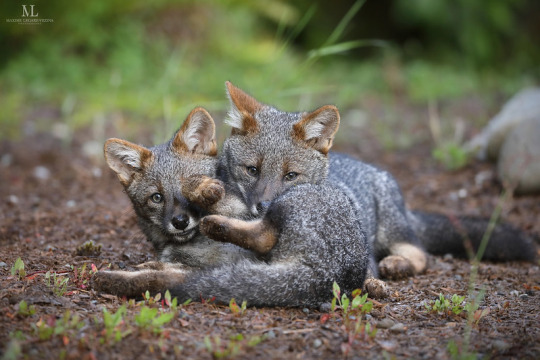

Photo Credits:
(1) Jono Dashper (2) Unknown (3) Maxime Legare-Vezina (4) Kevin Schafer
#Darwin’s fox#fox#animal#animals#nature#wildlife#canine#wild animals#world#canid#dog#foxes#zoology#biology#science#best animal ever#canines#dogs#south america#South American fox#charles darwin#Darwin
972 notes
·
View notes
Text

A Bornean orangutan (Pongo pygmaeus) forages in the treetops in Sabah, Borneo, Malaysia
by Jono Dashper
#bornean orangutan#orangutans#great apes#apes#pongo pygmaeus#pongo#hominidae#simiiformes#haplorhini#primates#mammalia#chordata#wildlife: borneo#wildlife: malaysia#wildlife: asia
23 notes
·
View notes
Note
my lovely partner is originally from vietnam, and i've been dying to go to visit his family there. i've never EVER been to a jungle before and am SO excited for all the fauna i might encounter. do you have any favorite critters that i should keep an eye out for there? (near hanoi)
it’s a jungle you’ll surely see some wonderful bugs even without looking for them! big millipedes, pill millipedes, big katydids, raspy crickets, all sorts of colorful moths, huntsman spiders… plenty of things to find
but if you like centipedes as much as I do then that part of Vietnam has several beautiful morphospecies of Thereuopoda, including this gorgeous black one:
the Scolopendra there seem to be the chunky dirt-dwelling multidens, a personal favorite of mine but not terribly colorful.
your partner is probably not from a mountaintop, but if you do get the chance to visit some of the hills north of Hanoi, there’s a possibility you could find the most beautiful centipede in the world, Scolopendra “Mint Legs”.
86 notes
·
View notes
Text
Lycalopex fulvipes
Charles Darwin found these foxes on the voyage of the Beagle, so they were named after him. Their native name is zorro chilote.
They are described as charismatic and bold around people. After meeting one of them on Chiloé island in 1834, Darwin described them as “more curious or more scientific, but less wise, than the generality of his brethren”. In other words, Darwin’s foxes are very curious and observant, but not as wise as other fox species.

Darwin’s foxes are not actually foxes. True foxes belong to the vulpes genus, and these foxes belong to the lycalopex genus. They share this genus with the Sechuran fox, the hoary fox, the pampas fox, the culpeo, and the chilla. It was believed for a long time that the Darwin’s fox was a subspecies of the chilla, but they are now classified as a different species.
While most South American fox species prefer open grassland or scrub areas, Darwin’s foxes prefer dense forests. They are endemic to Chile, meaning they are only found there, with most individuals found on Chiloé island and in the Valdivian Coastal Range.
In these forests, Darwin’s foxes hunt for small animals like rodents and lizards along with fruit, eggs, beetles, and carrion. They are not strictly nocturnal, diurnal, or crepuscular, so they just hunt when they want to.

Like almost all other fox species, Darwin’s foxes prefer to live alone, only living in pairs during the breeding season and when they have kits.
Due to habitat loss, feral dogs, and being hunted for their fur, Darwin’s foxes are highly endangered with less than 1,000 individuals left. Conservation efforts have grown their population by small amounts but they are still in danger of extinction.
I rate this very curious fox 18/10. They may be “less wise” than other foxes but their charisma makes up for that
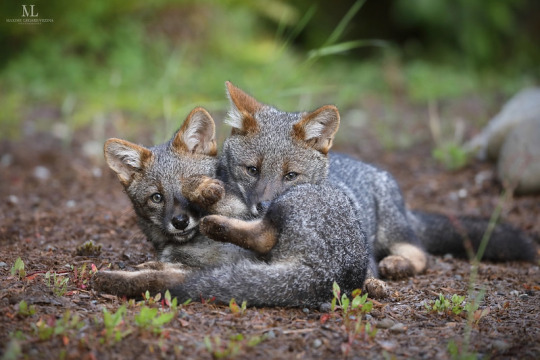

Photo credits:
(1) Jono Dashper (2) Unknown (3) Maxime Legare-Vezina (4) Kevin Schafer
#Darwin’s fox#animals#biology#nature#science#wildlife#zoology#animal#dog#dogs#wild#zorro#fox#foxes#darwin#charles darwin#chilote#zorro chilote
287 notes
·
View notes
Photo

Green Peafowl - Pavo muticus by Jono Dashper Wildlife https://flic.kr/p/2otNjh6
18 notes
·
View notes
Text
Profit Over People is Compromising Inclusivity in Elite Sports
In the realm of elite sports where athletes, fans and clubs alike unite to compete with and against each other, there is a fundamental principle which is seemingly forgotten about by those in charge: inclusivity. At its heart, the world of sports celebrates the human spirit's potential, regardless of a person’s background, identity or what they believe. Yet, behind the scenes, a complex interplay takes place between inclusivity and profit, a struggle where the pursuit of profit often overshadows the need for inclusivity and the prevention of discrimination. Discrimination in sports, as described by Dashper and Fletcher, refers to differential treatment, exclusion or disadvantage experienced by individuals or groups based on certain characteristics. Dashper and Fletcher argue that people tend to discriminate against others for their race, ethnicity, gender, sexuality, disability or socioeconomic status. While every issue is equally important in its own right, in recent years the marginalisation of those because of their gender or how they identify has become more recognisable thanks to the rapid growth of women's sports and the audience which it has.
Where Did Discrimination against Women in Sport Stem From
Discrimination based on gender or identity has a long history, with its roots dating back to ancient times. The earliest notable case of such discrimination is often associated with the 'Ancient Olympics.' In these ancient games, women were excluded from participating in the main male Olympic events and were instead directed to their competition, called the Heraean Games, which were considered less prestigious. The practice of segregating men and women in sports persisted for centuries, continuing into the 20th century.
During the 19th century, the participation of women in sports was actively discouraged. Prevailing beliefs at the time argued that physical exertion could harm women's reproductive capacity, and any involvement in competitive sports was considered socially improper. In the 20th century, as women began to break into the world of competitive sports, they faced substantial challenges. Women faced difficulties when it came to accessing proper training facilities, participation in sporting events, and securing substantial funding remained a challenge due to the societal notion that their involvement in sports was still seen as improper.
Closer to home, we can also examine the discrimination women encountered in football at the hands of the Football Association (FA). In the late 19th and early 20th centuries, women's football was in its 'formative years.' During this period, the sport gained popularity and drew significant crowds, similar to the crowds of the men's game. However, despite its large audience, women's football remained largely unregulated. The lack of recognition from governing bodies and a lack of infrastructure for women's teams posed challenges in imposing regulations and standards.
A notable turning point in the women’s game came during World War I, when women's football enjoyed a surge in popularity, becoming the sole elite football genre available for spectators while the men were at war.

However, in 1921, women's football was abruptly banned. The ban was driven by a mixture of discrimination and jealousy regarding the sport's rapid growth, with some fearing that the popularity of women's football might overshadow men's football and divert financial resources away from it. In 1971 the ban was eventually lifted, allowing women to compete in regulated football once more and proved to be a turning point in the growth and development of the sport in the modern era.
Despite women, and now many other gender identities, being allowed to compete in high-level sports there is still a stigma which is prevalent in almost every sport which suggests that men’s sport is the highest level and any other category is below it and not worthy of the same prizes and financial backing.
The financial disparity between sportsmen and sportswomen
As mentioned earlier, gender inequality in football has been a persistent issue. While there have been improvements, several key problems continue to prioritise financial gain for those at the top while sidelining the equality of others.
The most glaring issue in women's football is the gender pay gap. While directly comparing players' salaries is complex due to how many aspects there are to consider, it's more straightforward to examine disparities in prize money and sponsorship between men's and women's games. For instance, consider the men's FIFA 2022 World Cup hosted in Qatar. The total prize pool amounted to $440 million, with the winners receiving $42 million which would be distributed between players and staff. Now, compare this to the 2023 Women's World Cup, where the total prize pool is merely a quarter of the men's, standing at $110 million. Similarly, the winners of the women's competition receive significantly less, with a total prize of $10.5 million going to the winners.

While it may seem logical that men, who often attract more sponsorship money and are considered the more marketable asset, receive the lion's share of the prize pool, it prompts questions about why FIFA doesn't distribute funds more equitably between the two tournaments. Surprisingly, FIFA did make an effort to increase the money on offer for elite-level women's international football. As reported by Jennifer Robinson in The Guardian, in 2019, FIFA announced a doubling of prize money for the Women's World Cup to $30 million as part of their commitment to gender equality. While this seems like a step in the right direction, a closer look reveals that the increase amounted to just 7.5% of what the men's tournament offered.
Robinson's report highlights that this new distribution not only paid women more but also increased men's earnings, thereby further widening the already huge pay gap. Interestingly, FIFA's decision to increase men's pay was made without any explanation from the FIFA Council. As a result of this change, the U.S. Women's team, winners of the World Cup, took home only 10.5% of the prize that the men received for winning their World Cup and just half of what the US men's team earned for simply qualifying for the tournament.
When FIFA was questioned about the gender pay gap, President Gianni Infantino initially echoed the familiar argument that "men's sports generate more revenue." He went on to express hope that "maybe one-day women's football will generate more than men's football."

In a report on The Conversation, Keith Rathbone sheds light on critics' doubts about FIFA's transparency in revenue-sharing and the feasibility of achieving equal pay for women in the future. The Professional Footballers Association (PFA), for example, thinks the sizable pay gap is “either couched in diplomacy or politicisation” and their decisions are made purely by “looking at their balance sheet”.
The Lack of Media Coverage
The disparity in pay between male and female athletes in sports, particularly in elite-level football, is often attributed to the significant imbalance in media coverage and limited investment. We've grown accustomed to the prevalence of men's sports being broadcast, with the majority of live events on mainstream television focusing on men's competitions. A 2021 USC/Purdue University study on ESPN's broadcasting schedule reveals this gender bias. It found that a staggering 95% of total television coverage and ESPN highlights are dedicated to men's sports. In contrast, women's sports received just 5.7% of the broadcast's attention. The study further investigated three local Los Angeles networks and uncovered just 5.1% of their sports coverage was focused on women.
However, looking at the UK, a 2022 report published by the Women's Sport Trust highlights the growth of women's sports, largely driven by the success of the Lionesses during Euro 2022. In contrast to the limited 5% of screen time women's sports receive in the US, the report reveals a more positive trend. Women’s Sports Trust found that 16% of coverage on BBC One, BBC Two, Channel 4, ITV, and Sky Sports Main Event was dedicated to women's sports. While there's still a lot of room to improve, this shift indicates that broadcasters are starting to provide the media coverage that elite female athletes rightfully deserve.

Tammy Parlour, the chief executive and co-founder of the Women’s Sport Trust, commented on the impressive growth of women’s sport by saying it “needs to translate the increased interest and attention into generating enhanced commercial revenue streams, such as merchandise, ticketing and media rights, and unlock innovative ways to monetise the passionate women’s sports community, many of whom were new to sport during the Women’s Euros”.
Whilst the growing audience is something for all involved to be proud of, it is only right to discuss how unfairly the finances are distributed between both men and women when it comes to purchasing broadcasting rights for the highest levels of the respective games.
The Women's Super League, the highest level of women's football in the UK, achieved a landmark with 37.6 million viewers in 2022, marking a 5 million increase from the previous year. Remarkably, Women's Sport Trust reported that 8 million of these viewers exclusively tuned in to watch the Women’s Super League and didn’t view a single Premier League match. Nevertheless, despite this surge in viewership, Sky Sports pays only £8 million per year to broadcast 35 Women's Super League matches each season on their networks.
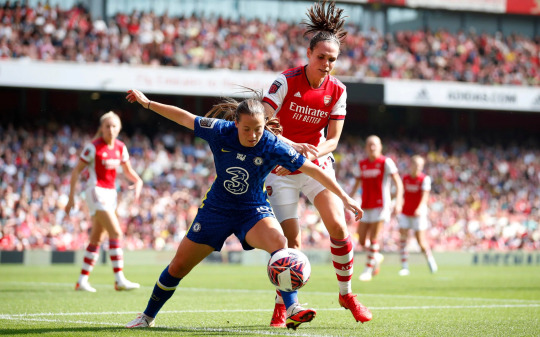
In the men's game though, the Premier League secures £1.6 billion annually from Sky Sports and TNT to allow them to stream 200 matches in the UK, a significant amount more per game than the Women’s Super League receives. Sky Sports, TNT and other sporting bodies, according to an SO Legal report, would contend that this substantial investment in men's football is justified by the extensive viewership and higher revenues it garners. Nonetheless, SO Legal maintains that with the right opportunities, the women's game has the potential to achieve similar financial success, bridging the gap in revenues between the two and offering a fairer distribution of resources.
Infrastructure Challenges in Women’s Football
In addition to the unequal media coverage, women's football faces challenges stemming from a lack of dedicated infrastructure. While all Premier League clubs have their own women's teams, the majority do not play at their home stadium and instead ground share. According to a report by Charlotte Marsh for Sky Sports, only two of the 2022/23 Women's Super League (WSL) teams shared facilities with their male counterparts: Reading, who shared the Select Car Leasing Stadium and Leicester, who shared the King Power Stadium.

Heading into 2023/24, according to Marsh, there were more teams in the Women’s Championship (4) that will play permanently in the larger men’s stadiums than in the WSL, which will have just two. Marsh, who is a WSL expert, reports that Chelsea have their own ground in Kingsmeadow, which they previously shared with AFC Wimbledon. The remaining share with EFL, non-league, rugby and academy teams.
While some clubs appear to prioritise their men's teams over their women's counterparts, Arsenal stands out as an example of progressive change in the treatment of women's football. Arsenal has set a precedent by taking full advantage of the growing market and using their larger home stadium. Last year alone Arsenal hosted 11 home games at the Emirates Stadium, including all their Women's Champions League matches. This stands in stark contrast to Liverpool Women's historical approach, as they have only had the opportunity to play at Anfield on three occasions throughout their 34-year existence.

Although, while they would never admit it, some clubs may argue that their main stadiums primarily serve their men's first teams, the practices of clubs like Leicester and Reading demonstrate that sharing facilities can be effectively implemented if a club is so desperate to do so. The reluctance of many clubs to follow suit is often attributed to the additional effort and lack of reward that having another matchday in the middle of the week would bring to a club. So, as a result, many clubs find it more convenient to relocate their women's teams to nearby alternative, and cheaper, stadiums.
However, with the increasing demand for women's football, clubs are recognizing the need to invest in specialized infrastructure tailored to the women's game and its audience. In her exploration of the future of women's football, Marsh spoke to Chris Lee, a managing director at a leading architectural design firm, to gain insights into the future of infrastructure for women's football. Lee believes the next step is to "understand what a stadium for a women's football match should be." He points out that many stadiums are designed with seating tiers based on a male eye height, which means they are not optimized for accessibility to everyone and tend to cater to what is perceived as the majority.
Work is being done, but more is needed...
In conclusion, discrimination in elite sports represents a persistent and complex issue that challenges the fundamental principle of inclusivity in the realm of sports. While sports celebrate the human spirit's potential and should be free from discrimination based on characteristics such as race, ethnicity, gender, sexuality, disability, or socioeconomic status, the pursuit of profit often overshadows the need for inclusivity. Discrimination against women and other marginalized groups in sports has historical roots dating back to ancient times and has continued through the 20th century.
Gender discrimination in sports has particularly marginalized women and their participation. Women were excluded from many mainstream sports and often discouraged from participating in competitive activities during the 19th and 20th centuries. Even in recent history, women's football faced discrimination, including an abrupt ban in 1921, driven by a mix of discrimination and jealousy regarding its rapid growth.
Despite progress allowing women and other gender identities to compete in high-level sports, there is still a lingering stigma that perceives men's sports as superior and more deserving of prizes and financial backing.
The financial disparity in women's football, illustrated by the significant gender pay gap and disparities in prize money and sponsorship, raises questions about equity and representation. Initiatives such as FIFA's commitment to doubling the Women's World Cup prize money represent steps in the right direction but may fall short of achieving true gender equality. Critics challenge the transparency and feasibility of achieving equal pay for women in sports, highlighting the need for more concrete action and a departure from the "men's sports generate more revenue" argument.
The lack of media coverage presents another significant challenge, with men's sports dominating broadcasting schedules and receiving the lion's share of attention. However, positive trends have emerged, such as the growth of women's sports in the UK driven by the success of the Lionesses during Euro 2022. The presence of women's sports on major broadcasting networks is increasing, and this progress indicates a shift toward more equitable media coverage.
Furthermore, the lack of dedicated infrastructure for women's football poses challenges to the growth of the sport. Many women's teams share facilities with men's teams or lower-league clubs, creating suboptimal conditions and accessibility issues. There is a growing recognition of the need to invest in specialized infrastructure tailored to women's football and its unique audience.
In summary, discrimination in elite sports presents a multifaceted issue involving financial disparities, media coverage imbalances, and infrastructure challenges. While there have been positive developments and increased awareness, the journey toward inclusivity and equity in sports continues. Overcoming discrimination in sports requires ongoing efforts to address these disparities and promote fairness, ultimately ensuring that every athlete, regardless of their background or identity, can participate and compete on an equal playing field
1 note
·
View note
Text
The Ongoing Struggle for Inclusivity and Gender Equality in Elite-Level Sports
In the realm of elite sports where athletes, fans and clubs alike unite to compete with and against each other, there is a fundamental principle which is seemingly forgotten about by those in charge: inclusivity. At its heart, the world of sports celebrates the human spirit's potential, regardless of a person’s background, identity or what they believe. Yet, behind the scenes, a complex interplay takes place between inclusivity and profit, a struggle where the pursuit of profit often overshadows the need for inclusivity and the prevention of discrimination. Discrimination in sports, as described by Dashper and Fletcher, refers to differential treatment, exclusion or disadvantage experienced by individuals or groups based on certain characteristics. Dashper and Fletcher argue that people tend to discriminate against others for their race, ethnicity, gender, sexuality, disability or socioeconomic status. While every issue is equally important in its own right, in recent years the marginalisation of those because of their gender or how they identify has become more recognisable thanks to the rapid growth of women's sports and the audience which it has.
Where Did Discrimination against Women in Sport Stem From
Discrimination based on gender or identity has a long history, with its roots dating back to ancient times. The earliest notable case of such discrimination is often associated with the 'Ancient Olympics.' In these ancient games, women were excluded from participating in the main male Olympic events and were instead directed to their competition, called the Heraean Games, which were considered less prestigious. The practice of segregating men and women in sports persisted for centuries, continuing into the 20th century.
During the 19th century, the participation of women in sports was actively discouraged. Prevailing beliefs at the time argued that physical exertion could harm women's reproductive capacity, and any involvement in competitive sports was considered socially improper. In the 20th century, as women began to break into the world of competitive sports, they faced substantial challenges. Women faced difficulties when it came to accessing proper training facilities, participation in sporting events, and securing substantial funding remained a challenge due to the societal notion that their involvement in sports was still seen as improper.
Closer to home, we can also examine the discrimination women encountered in football at the hands of the Football Association (FA). In the late 19th and early 20th centuries, women's football was in its 'formative years.' During this period, the sport gained popularity and drew significant crowds, similar to the crowds of the men's game. However, despite its large audience, women's football remained largely unregulated. The lack of recognition from governing bodies and a lack of infrastructure for women's teams posed challenges in imposing regulations and standards.
A notable turning point in the women’s game came during World War I, when women's football enjoyed a surge in popularity, becoming the sole elite football genre available for spectators while the men were at war. However, in 1921, women's football was abruptly banned. The ban was driven by a mixture of discrimination and jealousy regarding the sport's rapid growth, with some fearing that the popularity of women's football might overshadow men's football and divert financial resources away from it. In 1971 the ban was eventually lifted, allowing women to compete in regulated football once more and proved to be a turning point in the growth and development of the sport in the modern era.
Despite women, and now many other gender identities, being allowed to compete in high-level sports there is still a stigma which is prevalent in almost every sport which suggests that men’s sport is the highest level and any other category is below it and not worthy of the same prizes and financial backing.
The financial disparity between sportsmen and sportswomen
As mentioned earlier, gender inequality in football has been a persistent issue. While there have been improvements, several key problems continue to prioritise financial gain for those at the top while sidelining the equality of others.
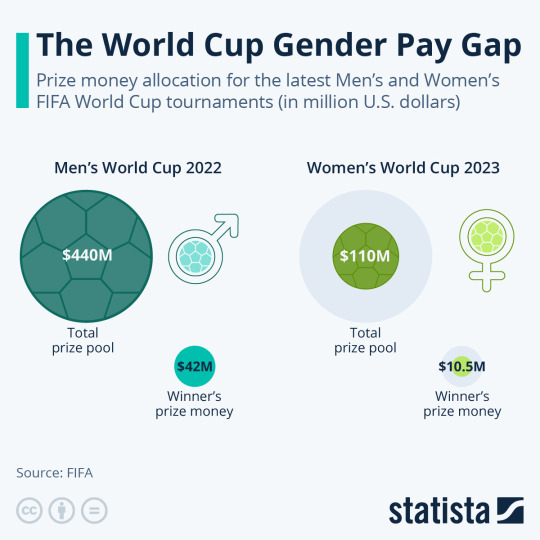
While it may seem logical that men, who often attract more sponsorship money and are considered the more marketable asset, receive the lion's share of the prize pool, it prompts questions about why FIFA doesn't distribute funds more equitably between the two tournaments. Surprisingly, FIFA did make an effort to increase the money on offer for elite-level women's international football. As reported by Jennifer Robinson in The Guardian, in 2019, FIFA announced a doubling of prize money for the Women's World Cup to $30 million as part of their commitment to gender equality. While this seems like a step in the right direction, a closer look reveals that the increase amounted to just 7.5% of what the men's tournament offered.
Robinson's report highlights that this new distribution not only paid women more but also increased men's earnings, thereby further widening the already huge pay gap. Interestingly, FIFA's decision to increase men's pay was made without any explanation from the FIFA Council. As a result of this change, the U.S. Women's team, winners of the World Cup, took home only 10.5% of the prize that the men received for winning their World Cup and just half of what the US men's team earned for simply qualifying for the tournament.
When FIFA was questioned about the gender pay gap, President Gianni Infantino initially echoed the familiar argument that "men's sports generate more revenue." He went on to express hope that "maybe one-day women's football will generate more than men's football."
In a report on The Conversation, Keith Rathbone sheds light on critics' doubts about FIFA's transparency in revenue-sharing and the feasibility of achieving equal pay for women in the future. The Professional Footballers Association (PFA), for example, thinks the sizable pay gap is “either couched in diplomacy or politicisation” and their decisions are made purely by “looking at their balance sheet”.
The Lack of Media Coverage
The disparity in pay between male and female athletes in sports, particularly in elite-level football, is often attributed to the significant imbalance in media coverage and limited investment. We've grown accustomed to men's sports being broadcast over women’s, with the majority of live events on mainstream television focusing on men's competitions. A 2021 USC/Purdue University study on ESPN's broadcasting schedule reveals this gender bias. It found that a staggering 95% of total television coverage and ESPN highlights are dedicated to men's sports. In contrast, women's sports received just 5.7% of the broadcast's attention. The study further investigated three local Los Angeles networks and uncovered just 5.1% of their sports coverage was focused on women.
However, looking at the UK, a 2022 report published by the Women's Sport Trust highlights the growth of women's sports media coverage, largely driven by the success of the Lionesses during Euro 2022. In contrast to the limited 5% of screen time women's sports receive in the US, the report reveals a more positive trend. Women’s Sports Trust found that 16% of coverage on BBC One, BBC Two, Channel 4, ITV, and Sky Sports Main Event was dedicated to women's sports. While there's still a lot of room to improve, this shift indicates that broadcasters are starting to provide the media coverage that elite female athletes rightfully deserve.
Tammy Parlour, the chief executive and co-founder of the Women’s Sport Trust, commented on the impressive growth of women’s sport by saying it “needs to translate the increased interest and attention into generating enhanced commercial revenue streams, such as merchandise, ticketing and media rights, and unlock innovative ways to monetise the passionate women’s sports community, many of whom were new to sport during the Women’s Euros”.
Whilst the growing audience is something for all involved to be proud of, it is only right to discuss how unfairly the finances are distributed between both men and women when it comes to purchasing broadcasting rights for the highest levels of the respective games.
The Women's Super League, the highest level of women's football in the UK, achieved a landmark with 37.6 million viewers in 2022, marking a 5 million increase from the previous year. Remarkably, Women's Sport Trust reported that 8 million of these viewers exclusively tuned in to watch the Women’s Super League and didn’t view a single men’s Premier League match in that season. Nevertheless, despite this surge in viewership, Sky Sports pays only £8 million per year to broadcast 35 Women's Super League matches each season on their networks.
In the men's game though, the Premier League secures £1.2 billion annually from Sky Sports to allow them to stream 128 matches in the UK, a significant amount more per game than the Women’s Super League receives. Sky Sports and other sporting bodies, according to an SO Legal report, would contend that this substantial investment in men's football is justified by the extensive viewership and higher revenues it garners. Nonetheless, SO Legal maintains that with the right opportunities, the women's game has the potential to achieve similar if not better financial success, bridging the gap in revenues between the two and offering a fairer distribution of resources.
Infrastructure Challenges in Women’s Football
Media coverage is just one issue which plagues women’s sport, another is the lack of dedicated infrastructure which allows women’s teams to fully capitalise on the growing sport. While all Premier League clubs have their own women's teams, the majority do not play at their club’s home stadium and instead share grounds with other local teams. According to a report by Charlotte Marsh for Sky Sports, only two of the 2022/23 Women's Super League (WSL) teams shared facilities with their male counterparts: Reading, who share the Select Car Leasing Stadium and Leicester, who share the King Power Stadium.
Heading into 2023/24, according to Marsh, there were more teams in the Women’s Championship (4) that will play permanently in the larger men’s stadiums than in the WSL, which will have just two. Marsh, who is a dedicated Sky Sports WSL journalist, reports that Chelsea have their own women’s ground in Kingsmeadow, which they previously shared with AFC Wimbledon and that the remaining share with EFL, non-league, rugby and even academy teams.
While some clubs appear to prioritise their men's teams over their women's, Arsenal stands out as an example of progressive change in the treatment of women's football. Arsenal has set a precedent by taking full advantage of the growing market and using their larger home stadium. Last year alone Arsenal hosted 11 home games at the Emirates Stadium, including all their Women's Champions League matches. This stands in stark contrast to the Liverpool Women's team, as they have shockingly only had the opportunity to play at Anfield on three separate occasions throughout their 34-year existence.
Although, while they would never admit it, some clubs may argue that their main stadiums primarily serve their men's first teams, the practices of clubs like Leicester and Reading demonstrate that sharing facilities can be effectively implemented if a club is so desperate to do so. The reluctance of many clubs to follow suit is often attributed to the additional effort and lack of reward that having another matchday in the middle of the week would bring to a club. So, as a result, many clubs find it more convenient to relocate their women's teams to nearby alternative, and cheaper, stadiums.
However, with the increasing demand for women's football, clubs are recognizing the need to invest in specialized infrastructure tailored to the women's game and its audience. In her exploration of the future of women's football, Marsh spoke to Chris Lee, a managing director at a leading architectural design firm, to gain insights into the future of infrastructure for women's football. Lee believes the next step is to "understand what a stadium for a women's football match should be." He points out that many “stadiums are designed with seating tiers based on a male eye height”, which means they are not optimised for accessibility to everyone and tend to cater to what is perceived as the majority.
Lee further discusses how the demographic for women’s football, as a result of its rapid growth, is very different to that of men’s football and that must be accounted for. “What does that mean when a large part of your audience are six years old? How does that change the building? What does it mean when you’ve got more children, pushchairs and more people in wheelchairs?”.
While women’s team stadiums are being built in the US NWSL, Charlotte Marsh argues that English clubs don’t necessarily need to have purpose-built stadiums they just need to more effectively use what they currently have.
Marsh argues that work is being done by clubs, Arsenal in particular, but it is currently a “rather slow process [...], with one or two games per season in larger stadiums being better than none, but many have the capacity for more”. The WSL journalist later mentions that ultimately, the decisions are down to club officials but it is easy to see what grounds can be shared between both the men’s and women’s teams. Finally, Marsh suggests that nothing major will happen in terms of women’s infrastructure until “one of the so-called ‘big’ WSL teams - such as Arsenal, Chelsea, Man City or Man United - move permanently to their men’s stadiums”.
Work is being done, but more is needed...
In conclusion, discrimination against women in sports, especially in elite-level football, has a long history rooted in gender bias and unequal treatment. While there have been some improvements, significant challenges persist. The gender pay gap remains a glaring issue, with substantial disparities in prize money and sponsorship. Media coverage also plays a crucial role, with women's sports receiving far less attention and investment compared to men's sports, though some positive trends are emerging in this regard.
Infrastructure challenges, such as the lack of dedicated stadiums for women's teams, further hinder progress in women's football. While some clubs have embraced change, the majority continue to prioritize their men's teams. However, there is a growing recognition of the need for specialized infrastructure tailored to women's football and its diverse audience.
In the quest for gender equality in sports, addressing these issues is essential to ensure that women's sports receive the recognition, support, and resources they rightfully deserve.
1 note
·
View note
Photo

Black-winged Stilt - Himantopus himantopus by Jono Dashper Wildlife Little Rann of Kutch, Zainabad, Gujarat, India Contact me on [email protected] for use of this image. https://flic.kr/p/2h9mkHE
0 notes
Photo

Untitled (1991) - Julian Dashper
8 notes
·
View notes
Photo

Bornean bearded pig (Sus barbatus)
Photo by Jono Dashper
#bornean bearded pig#sus barbatus#sus#suini#suidae#suina#artiofabula#artiodactyla#euungulata#scrotifera#eutheria#boreoeutheria#laurasiatheria#mammalia#tetrapoda#vertebrata#chordata
771 notes
·
View notes
Photo

JULIAN DASHPER Untitled (The Warriors), 1998 Vinyl on drumheads, drumkit, , edition dimensions variable
72 notes
·
View notes
Photo

Ansonia hanitschi by Jono Dashper
#Anura#Bufonidae#Ansonia#Ansonia hanitschi#toad#toads#frog#frogs#animal#animals#biology#nature#wildlife#amphibian#amphibians#zoology#herpetology#herps#fauna#critter#critters
278 notes
·
View notes

